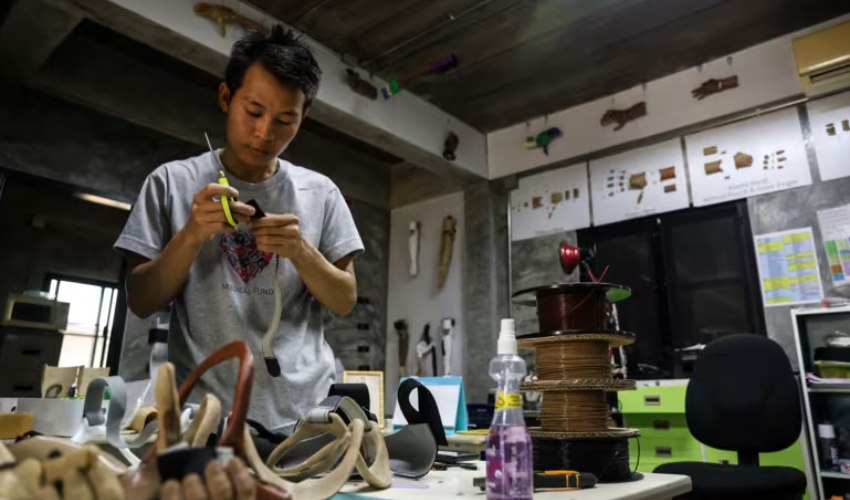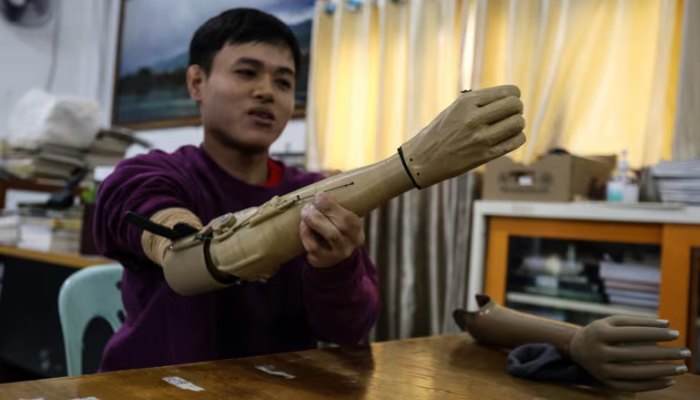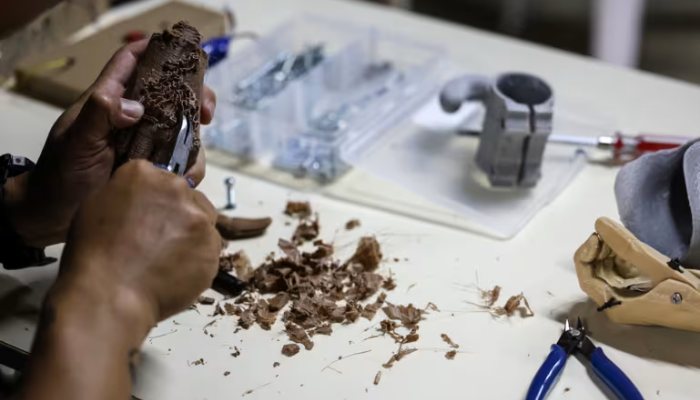3D Printing Revolutionizes Prosthetic Care for Amputees at Thai-Myanmar Border

In the unassuming border town of Mae Sot, Thailand, near Myanmar, a transformative effort is quietly underway, revolutionizing prosthetic care for amputees. With meticulous care, Aung Tin Tun, a dedicated 3D printing manager, oversees the creation of plastic prosthetic arm grips – simple hoops that promise newfound independence for the locals facing limb loss.
The Burma Children’s Medical Fund (BCMF) is at the forefront of this initiative, driven by a mission to provide hope and assistance to those in need. Housed within the Mae Tao Clinic compound, the BCMF team has leveraged 3D printing to meet the escalating demand for custom-fitted prostheses in the wake of Myanmar’s civil conflict.

Chan Thar, a 25-year-old library manager at the Mae Tao Clinic, undergoes a fitting session for a 3D printed prosthetic arm in the clinic’s library.
Since integrating 3D printing technology into their medical arsenal in 2019, the BCMF has unlocked a new era of prosthetic possibilities, marked by enhanced design and functionality. From basic utensil holders to complex limb-and-torso devices comprising over a hundred intricate components, the BCMF’s adoption of 3D printing has yielded significant, tangible benefits for recipients living near the border.
The spark for this initiative came from an unexpected source. Kanchana Thornton, founder of the BCMF, recalled a BBC documentary playing on TV about 3D printing. Realizing the potential of this technology within the clinic, Kanchana set out to put 3D printing to use.
With support from the Brodtbeck Philanthropy Foundation, the BCMF has expanded its capabilities, procuring state-of-the-art 3D printers to enhance the quality and accessibility of the prosthetic care delivered. Despite encountering several 3D printing challenges, such as lengthy production times, frequent calibration requirements, and a significant learning curve, the organization has continued to provide crucial aid. To reach individuals unable to access the clinic directly, the BCMF operates a mobile team within Myanmar, equipped with portable printers powered by solar energy, ensuring that no one is left behind.

Post-processing of a 3D printed prosthesis at the BCMF clinic.
Speaking on this process, Aung Tin Tun stated, “Some patients cannot come [to the Mae Tao Clinic] or cross the border, so it’s our responsibility to help them. We box up the 3D printer and cover it if we have to move it. Otherwise, we may get asked questions if [the Myanmar military] sees it.”
As the demand for prosthetic care continues to surge, exacerbated by the increased use of land mines and cluster munitions in the area, Kanchana seeks to provide a future where 3D printing can significantly benefit those in need along the Thailand-Myanmar border. Her goal is to empower individuals to regain nearly full mobility and dexterity, allowing them to easily reintegrate into their daily lives and reclaim a sense of normalcy.
What do you think of this 3D printed prosthetics initiative at the Myanmar border? Let us know in a comment below or on our LinkedIn, Facebook, and Twitter pages! Don’t forget to sign up for our free weekly newsletter here for the latest 3D printing news straight to your inbox! You can also find all our videos on our YouTube channel.






